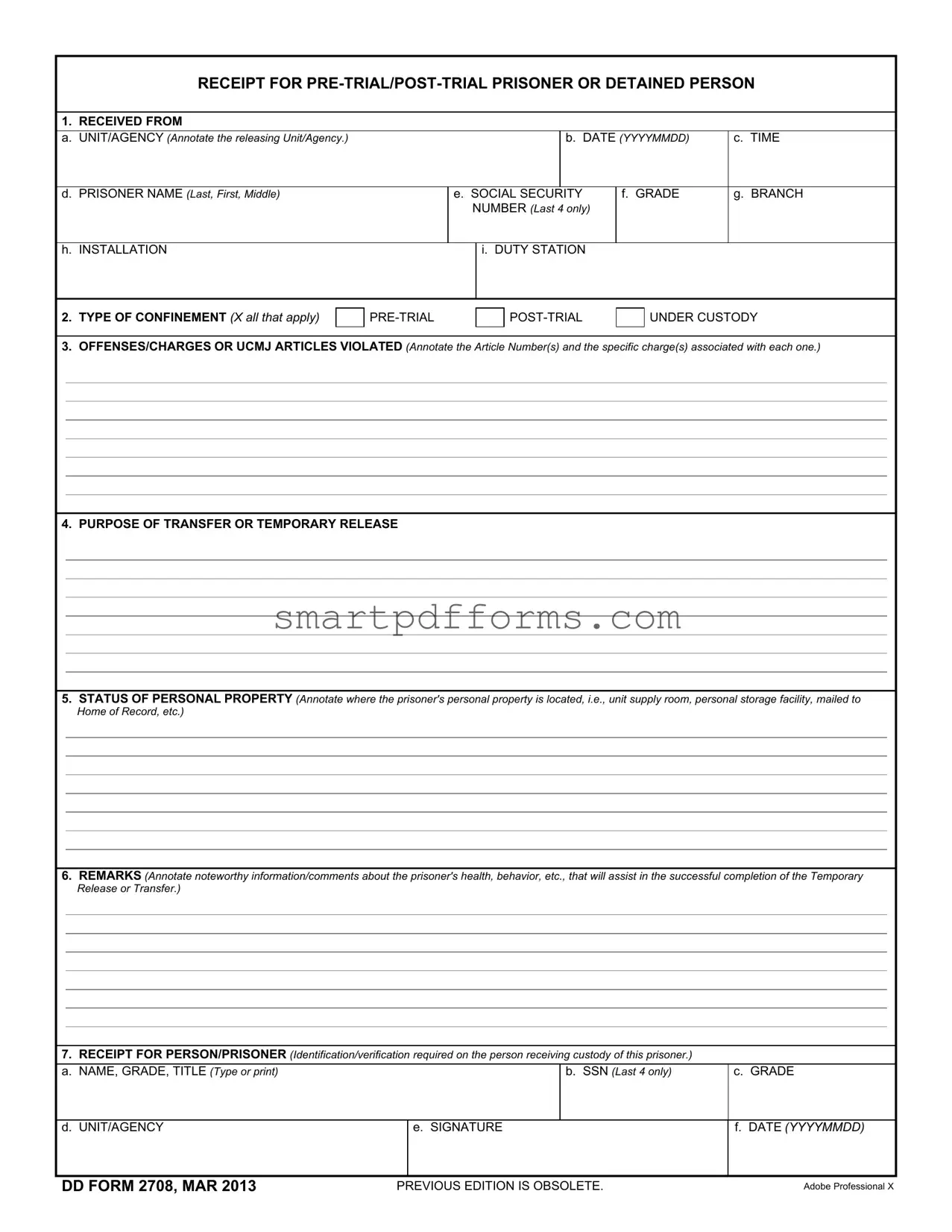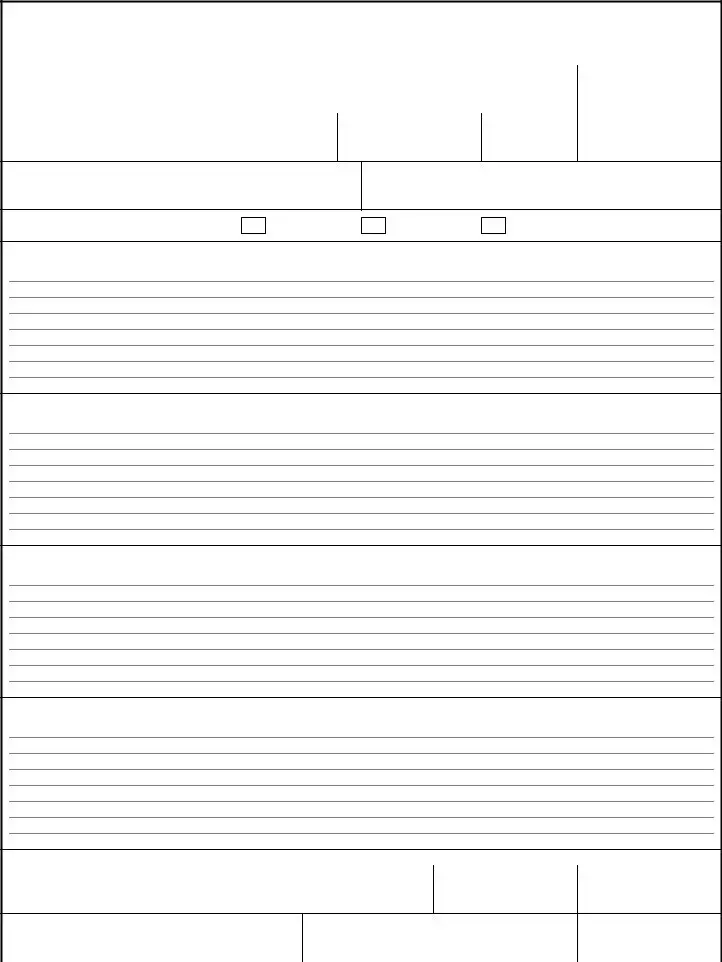Blank Dd 2708 PDF Template
The DD Form 2708 is defined as a "Receipt for Pre-Trial/Post-Trial Prisoner or Detained Person." It serves as an official document for the transfer of custody for individuals who are either awaiting trial or have been convicted, ensuring all relevant details such as the prisoner's name, social security number, and offenses charged are recorded accurately. The form facilitates a clear and structured process for the recording of confinement status, offenses or charges, and the management of personal property. For individuals involved in the custody transfer process, it's essential to accurately fill out and submit this form to ensure a seamless transition. Click the button below to learn more about how to correctly fill out the DD Form 2708.
Make This Document Now

